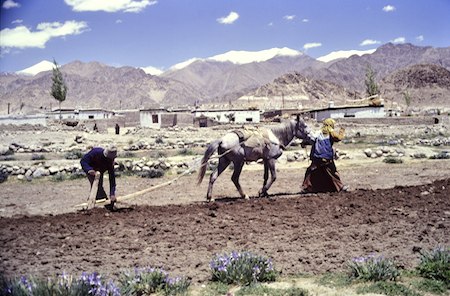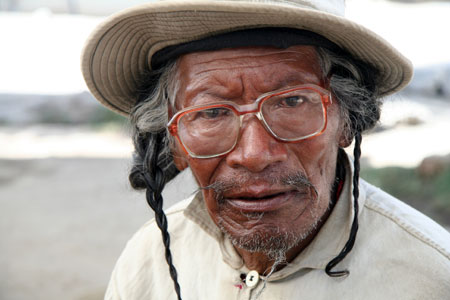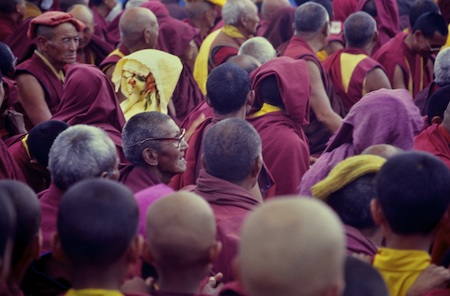Society

The area inhabited by tibetan speaking people spreads over three million square kilometers, at the heart of the Asian continent. Nicknamed the "Roof of the World", the Tibetan plteau is mostly covered with vast grassland punctuated by lakes, rocky deserts and alpine forests, most of it above three thousand meters. Most of the Tibetan cultural area is included within China, except for a few southern regions located in India, Nepal and Bhutan.
A peasant world
The economy on the tibetan plateau has always been centered on farming and animal raising.
Tibetan peasants live in villages of massive flat-roofed houses. The main crop they grow is barley, which is cultivated all over the country – it can grow at altitudes as high as 4000 meters ! According to their location, they also grow wheat, mustard, pees, rice, radish, apricots, bamboo...
Tibetan farmers also rear various animals such as yaks, horses, goat and sheep, which they use for transportation, milk products, meat and clothe-making. They take them to graze in the high pastureland during the summer months, and since they are often far away from the village, a part of the villagers usually moves to the grazing land with the animals and camp there for several weeks or months.
An important portion of the tibetan population is specialized in animal rearing. Taking care of huge herds of goats, sheep and yaks, the nomadic shepherds live all year round under the tent on the tibetan plateau.
The agrarian system developped over the centuries by Tibetans are based on a carefully balanced use of the natural resources and rely entirely on renewable energy. As a result, tibetans have prospered for several thousand years on the "roof of the world", each generation leaving a preserved environment to the next one.
During the Chinese invasion, more aggressive ways of exploiting the environment were promoted, endangering the fragile écologic balance of the Tibetan plateau.

A feudal society
Before the chinese occupation, the land was owned by either a monastery, a local lord or a noble family based in Lhassa. In this system of feudal type, many families were tied to the landowner who enticed them to pieces of land in exchange for the payment of a tax and a number of days of work at his service. This granted land was transmitted hereditarily, and some of these families could be quite wealthy.
Other families were granted smaller and non-transmittable plots with a much lighter tax. Other families had no access to land and could work anywhere outside the domain, in exchange for the payment of a fee owed to their landlord.
Some professions were considered impure : blacksmiths, butchers, corpse disposers, prostitutes were discriminated by the rest of the population with no chance to escape from their outcast status.
The two groups who owned the land – the aristocracy and the clergy – lost it when communism was implemented. Most of the nobles joined the ranks of the communist elite, while some of them went into exile as early as 1950. The clergy has been brutally supressed during the communist years, but is now allowed to operate, though restriscted to religious affairs and under governmental control. In exile, the clergy is flourishing and enjoys a certain international sympathy.
